This chapter is a continued part of Chapter 29| Bakumatsu Period History (幕末). Please read Chapter 29 before reading this chapter.

The red circle above indicates the time we discuss in this section
The last part of the Edo period, around the Tenmei era (天明), from 1781 to 1868, is called Bakumatsu. During this time, the economy in Japan began stagnating.
The several Tokugawa Shogun in different generations tried to perform financial reforms, but each time, it succeeded somewhat, but it never solved the core fundamental economic problems.
Tokugawa Bakufu tried mostly to impose fiscal restraint on the government, forced people to lead a frugal life, and banned even a small luxury. You know this only shrinks the economy and get things even worse. On top of it, they raised the prevailing interest rate, thinking that may solve the problem. It was a typical non-economist solution. The interest rate should be lowered in a situation like this. As a result, lower level Samurai became more impoverished, and farmers revolted often. In addition, many natural disasters struck the farming area. The famous Kurosawa movie “Seven Samurai” was staged around this time. As we all know, “Magnificent Seven” was a Hollywood version of the “Seven Samurai.”
Yet little by little, a small cottage industry began to grow, together with the improved farming productivity led by the local leaders. Merchants became affluent, and towns-people in the city became wealthier. However, the gap between rich and poor became wider. And the problem of Ronin (unemployed Samurai) became severe to the level where it was almost dangerous to society.
The Edo Towns-people’s Culture
During this time, novels were written for ordinary people, too, instead of only for the upper-class. In the past, the paintings were related to religion and only for the upper class. Now they became for ordinary people too.
The Bakumatsu time was the golden time for “Ukioe (浮世絵).” Kitagawa Utamaro (喜多川歌麿1753-1800) was well-known for portraits of ladies. Katsushika Hokusai (1760-1849 葛飾北斎) and Ando Hiroshige (1797-1858 安藤広重) were famous for scenery woodblock paintings. Maruyama Okyo (円山応挙) drew pictures using the European perspective method. Katsushika Hokusai’s daughter also drew some of her paintings in perspective. Her name is “Ooi, 応為 “.Only a few of her works are left now. It is said that even her genius father was surprised at her ability to draw.
Though the number was small, some people learned the Dutch language. The Netherlands was one of the only two countries that were allowed to enter Japan then. Those people translated the European medical book into Japanese using French and Dutch dictionaries, and they wrote a book called “Kaitai Shinsho (解体新書)”.After this book was translated, European history books, economy books, political books were translated. New ideas emerged from those books and influenced the intellects.
In society, schooling was thriving. Each feudal domain ran its schools for the sons of the Daimyo’s retainers. Children of the towns-people went to a school called Terakoya (寺子屋: an unofficial neighborhood school) to learn reading, writing, and arithmetic.
Pressure from the Outside World
Even though Japan was in Sakoku state(鎖国: national isolation policy), people knew what was happening outside of Japan. Since the early 17th century, messengers from Russia came to Japan to demand trades (1792 and 1804). In 1808, English ships came to Nagasaki. In 1825, Tokugawa Bakufu ordered to fire guns at any ships that came close to Japan. In 1842, when England won the Opium War against the Qing dynasty, Bakufu decided to supply foreign ships with food and fuel. They were afraid to have the same fate as Qing. In 1846, the U.S. sent Japan a fleet commander to open diplomatic relations, but the Bakufu refused. The U.S. needed Japan to open the ports to supply food, water, and fuel for their whaling ships in the Pacific Ocean.
In 1853, a fleet commander, Perry*, arrived at Uraga (浦賀: a port of Japan) with four warships displaying American military power to open the country. Tokugawa Bakufu did not have any clear policy on handling such a situation and realized it is difficult to maintain the isolation policy any longer.
In 1854, “the Japan-U.S. Treaty of Amity and Friendship” was signed. After that, Japan made treaties with England, Russia, France, and the Netherlands. That ended over 200 years of Sakoku (national isolation policy), and Japan opened several ports for foreign ships.
However, those treaties caused many problems. The treaties were unequal. It caused Japan a shortage of daily necessities; as a result, the prices went up. Also, a large amount of gold flowed out of Japan. It was caused by the difference in the exchange rate of gold to silver between Japan and Europe. In Japan, the exchange rate was gold 1 to silver 5, but in Europe, it was gold 1 to silver 15.
On top of these problems, there was another problem; who should be the next Shogun after Shogun Tokugawa Yesada (徳川家定), since he did not have any heir.
At a chaotic time like this, many feudal domains opposing each other wanted a Shogun whose political idea was on their side. Many other problems already had caused big battles among domains, and there were also other reasons for them to oppose the Bakufu.
Now the base of Tokugawa Bakufu began to fall apart. The Choshu-han (Choshu domain) and the Satsuma-han (Satsuma domain) were the main forces against the Tokugawa Bakufu. In the beginning, they opposed each other. But after many strained incidents, they decided to reconcile and went after the Bakufu together since they realized it was not the time to fight among themselves. England, realizing Bakufu did not have much power any longer, started to be closer to the Emperor’s side, whereas France sided with Tokugawa. England and France almost started a war in Japan.
In 1867, Tokugawa Yoshinobu issued “the Restoration of Imperial Rule (Taisei Hokan, 大政奉還).” In 1868, the Tokugawa clan left the Edo Castle, and the Meiji Emperor moved in. It is now called Kokyo (皇居: Imperial Palace). The present Emperor lives there.
Many well-known political figures were the driving forces and played an active role in toppling the Tokugawa Bakufu. Ito Hirobumi (伊藤博文), Okubo Toshimichi (大久保利通), Shimazu Nariakira (島津斉彬), and Hitotsubashi Yoshinobu (一橋慶喜) are among those. They established a new government system, the Meiji Shin Seifu (明治新政府), centering around the Emperor.
The original Edo-jo (Castle) was lost by a big fire, yet the original moat (you can see several swans), massive stone walls, a beautiful bridge called Nijyu-bashi (二重橋 below) are still there. Big garden areas are open to the public and free to walk around. This area is famous for beautiful cherry blossoms. The Imperial Palace is in front of and a walking distance from the Marunouchi side of Tokyo station.
Today, the Japanese like the historical dramas of the Meiji Ishin (Meiji Restoration) time, and we see them on TV and in movies quite often. Those are stories of Saigo Takamori (西郷隆盛), Sakamoto Ryoma (坂本龍馬), and Shinnsen-Gumi (新撰組). Though it was fiction, the Hollywood movie “Last Samurai” was staged around this time with a real historical character, Saigo Takamori.

Imperial Palace (From Wikimedia Commons, the free media repository ).
*Perry
Commodore M.C. Perry came to Japan two times with four warships. In 1853, he brought the sovereign diplomatic letter from the president of the U.S. The following year, he came back and demanded the answer to the letter. After the expedition, Perry wrote a book about his journey, “Expedition of an American Squadron to the China Seas and Japan, Under the command of Commodore M.C. Perry, United States Navy by order of the Government of the United States.” In his book, he mentioned Japan very favorably; the beautiful scenery and people’s ingenuities, lively, active women, and drawings.
Even though it was a long, tough negotiation between Edo Bakufu and Perry, there were several fun moments. Perry displayed and presented Japan with a 1:4-scale model steam locomotive, a sewing machine, etc. The Japanese had a Sumo match and gave him gifts like silk, lacquer wares, etc. The Japanese prepared elaborate banquets for the American diplomats. Perry also invited the Japanese officials for his feast. The biggest hit was when Perry served a dessert at the end of the dinner. Perry printed each guest’s family crest on a small flag and put it on the desert.
Before starting his expedition, he had anticipated tough negotiations lying ahead. So, he had studied Japanese beforehand and discovered that the Japanese would enjoy parties a lot. He brought skilled chefs and loaded the ship with some livestock to Japan for future parties. He entertained Japanese officials with whiskey, wine, beer, etc. Initially, the U.S. wanted Japan to open five ports, whereas Bakufu was willing to open only one port. In the end, both sides agreed on opening three ports.
ja.wikipedia.org/wiki/黒船来航
ja.wikipedia.org/wiki/マシュー・ペリー

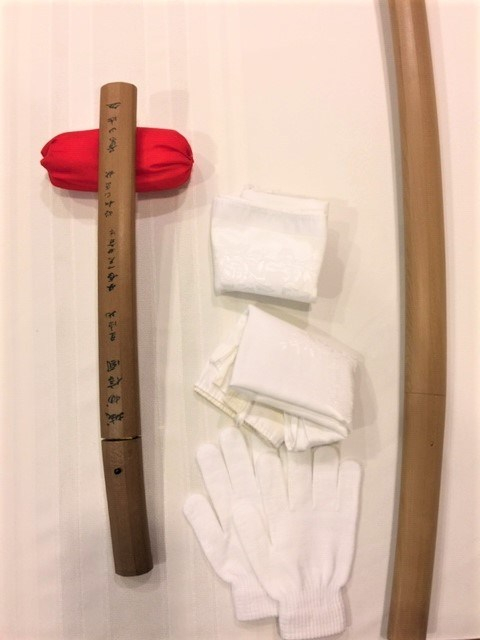
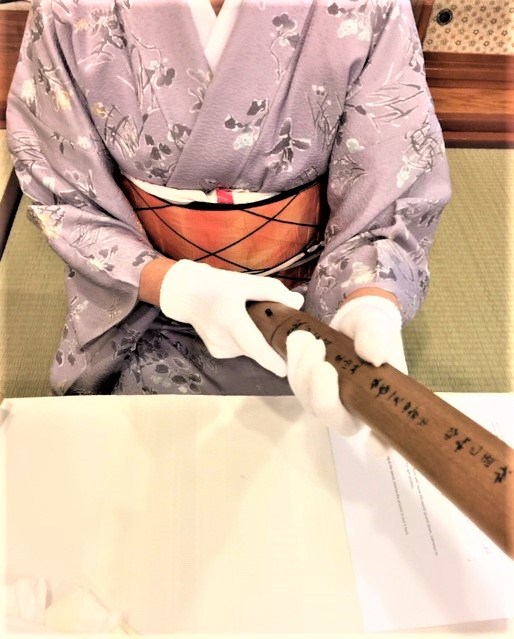



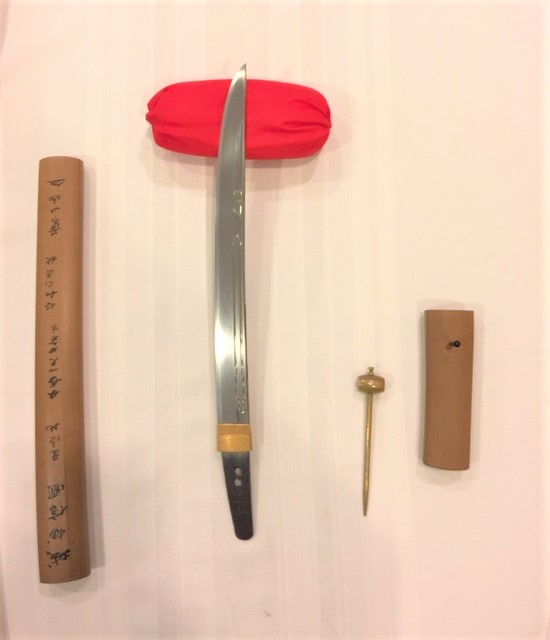







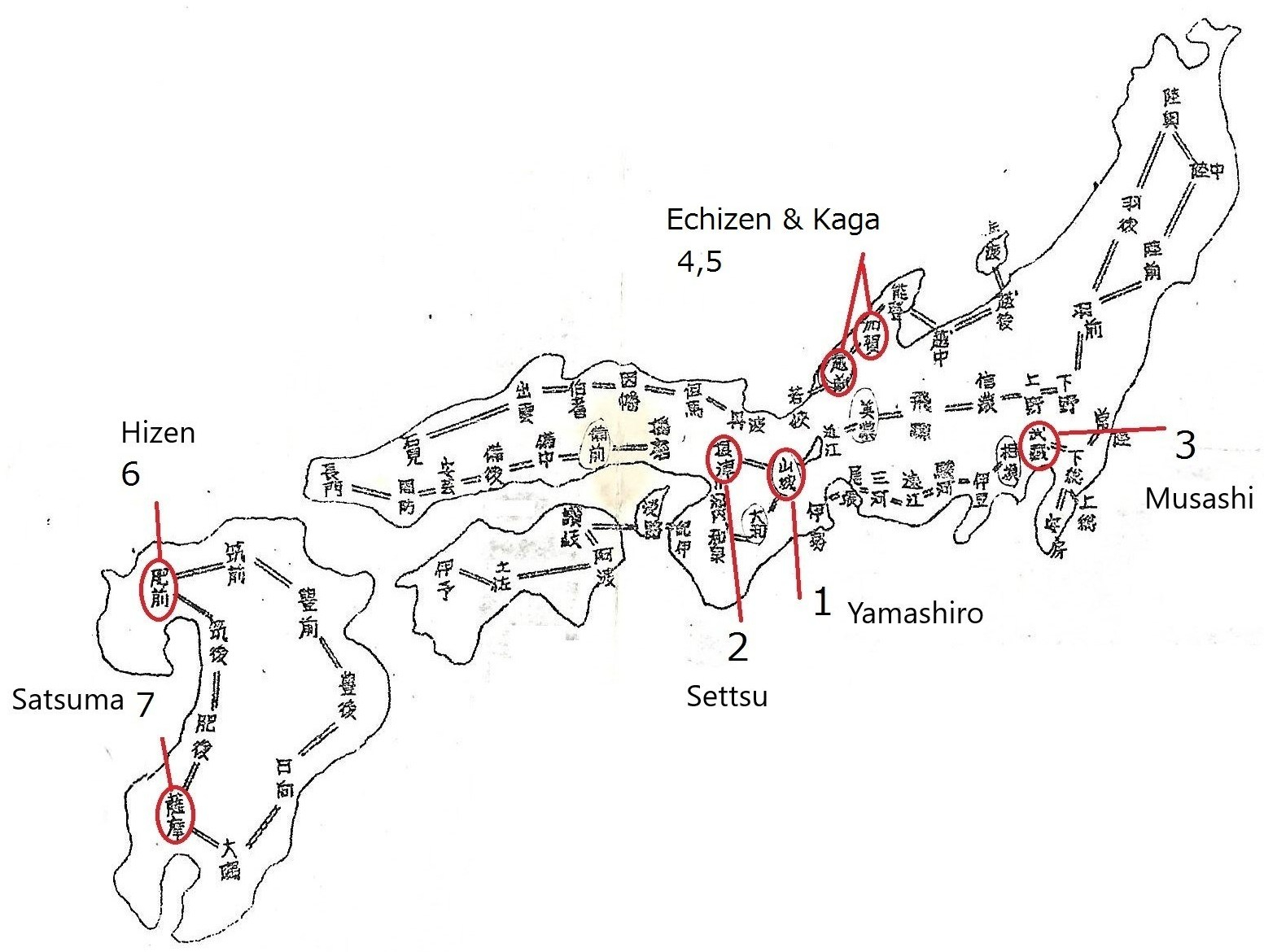

 Yasutsugu From Sano Museum Catalogue. Permission granted to use
Yasutsugu From Sano Museum Catalogue. Permission granted to use
 Kotetsu (虎徹) from Sano Museum Catalogue, (permission granted to use)
Kotetsu (虎徹) from Sano Museum Catalogue, (permission granted to use)
 Miyahara Mondonosho Masakiyo (宮原主水正正清) from Sano Museum Catalogue, (permission granted to use).
Miyahara Mondonosho Masakiyo (宮原主水正正清) from Sano Museum Catalogue, (permission granted to use).
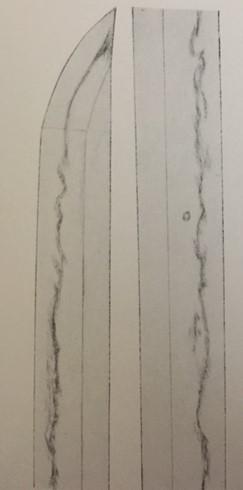 Horikawa Kunihiro (堀川国広) From Sano Museum Catalogue (permission granted)
Horikawa Kunihiro (堀川国広) From Sano Museum Catalogue (permission granted)
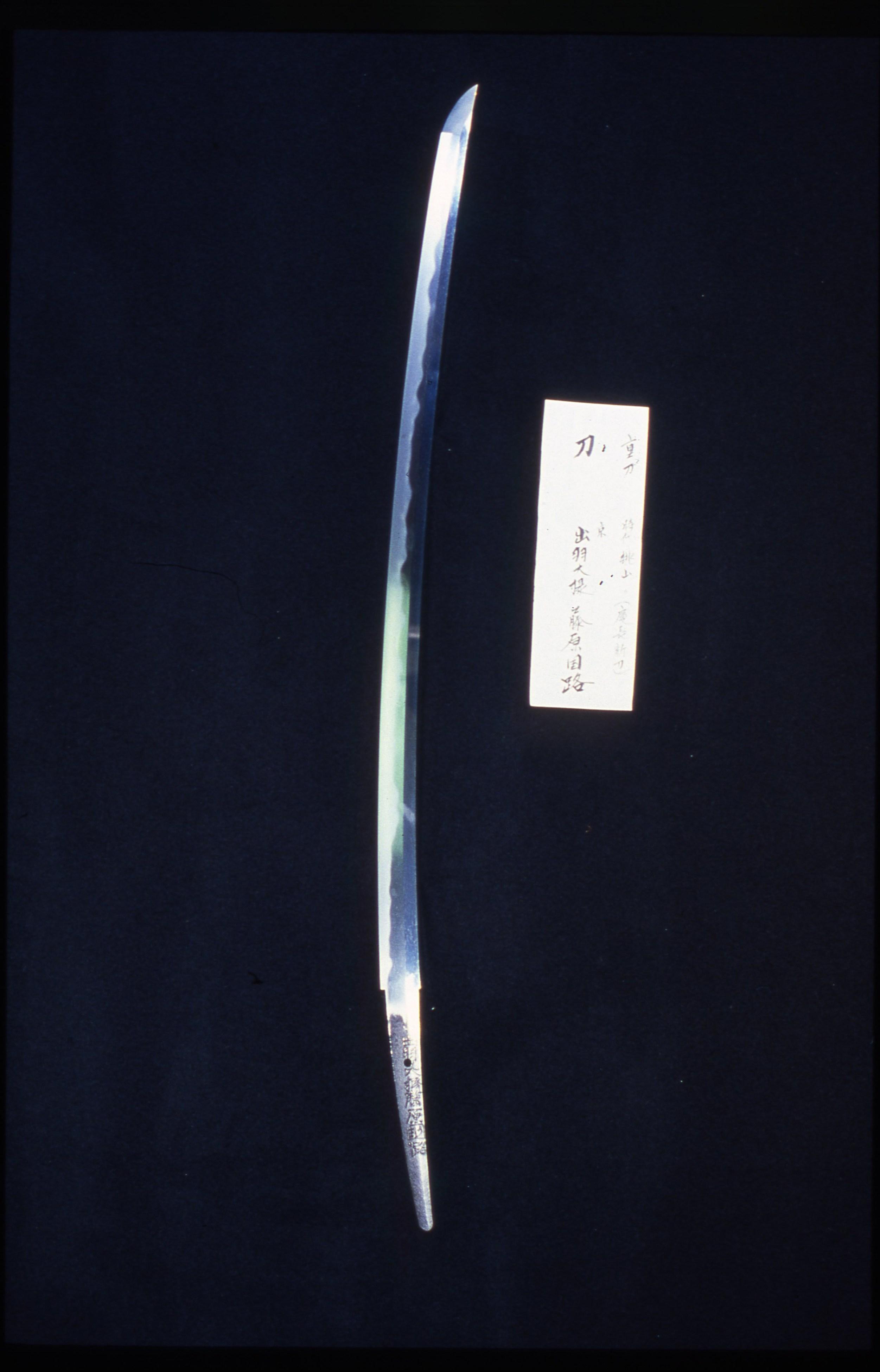 Iga-no-Kami Kinnmichi (伊賀守金道) Dewa Daijyo Kunimichi (出羽大掾国路) Both Juyo Token (重要刀剣), once my family owned, photos were taken by my father.
Iga-no-Kami Kinnmichi (伊賀守金道) Dewa Daijyo Kunimichi (出羽大掾国路) Both Juyo Token (重要刀剣), once my family owned, photos were taken by my father.
 Ikkanshi Tadatsuna from Sano Museum Catalogue. Permission granted to use.
Ikkanshi Tadatsuna from Sano Museum Catalogue. Permission granted to use.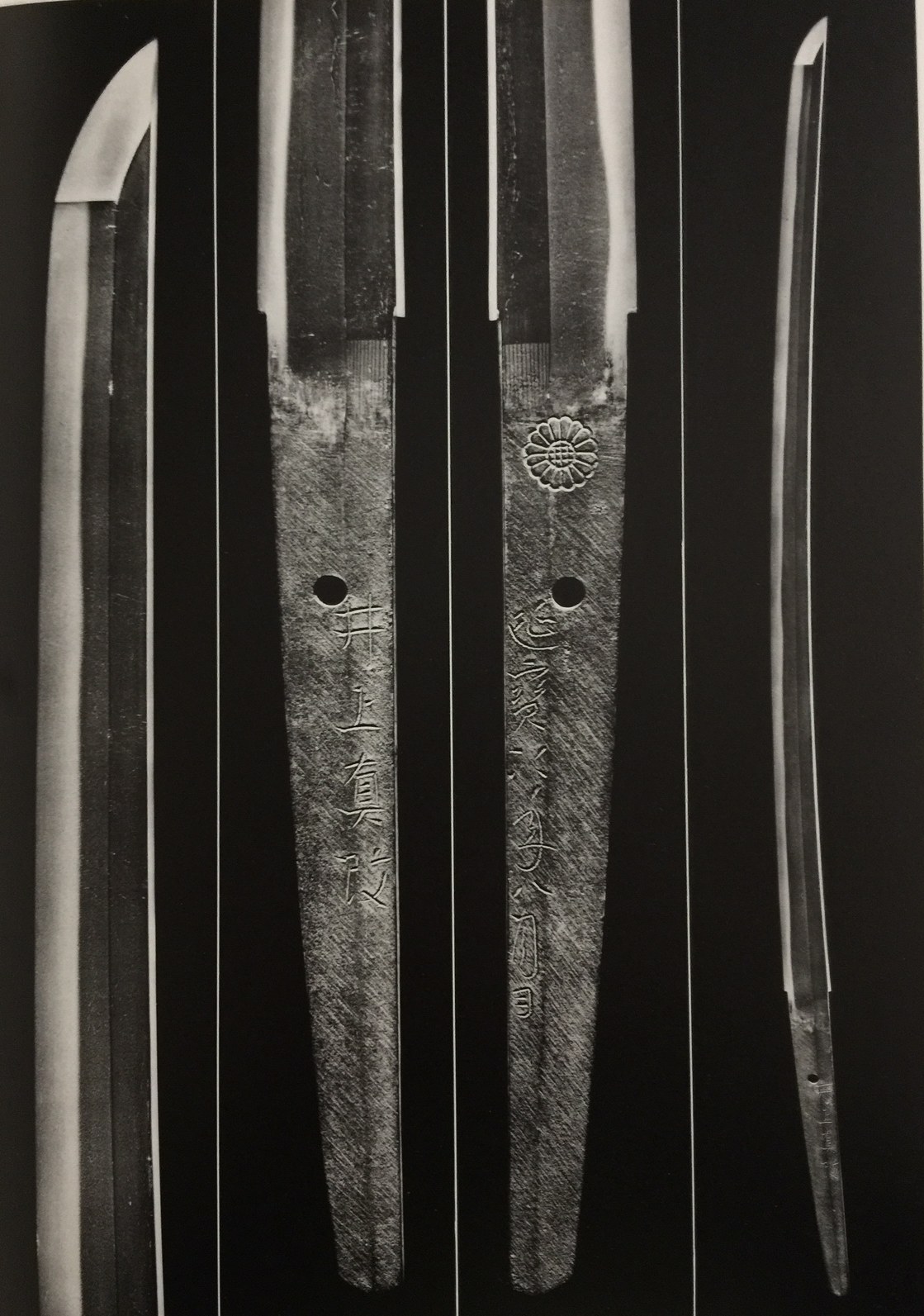


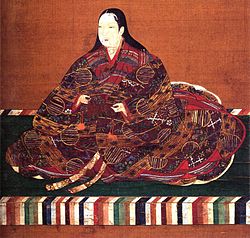

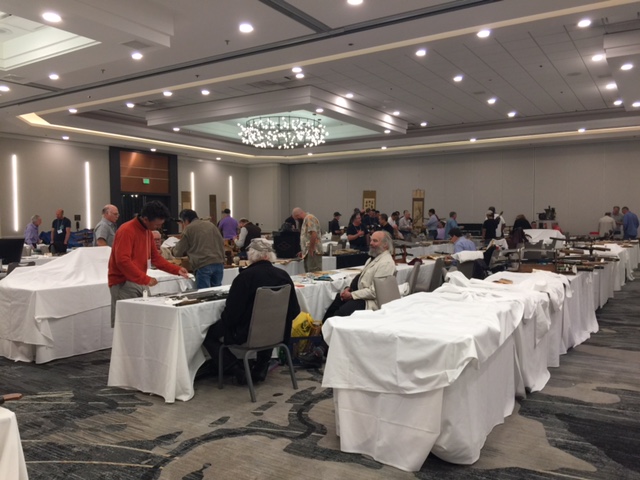







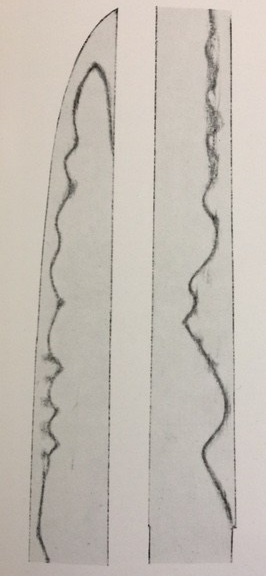 Muramasa (村正) from Sano Museum Catalogue (permission granted)
Muramasa (村正) from Sano Museum Catalogue (permission granted)